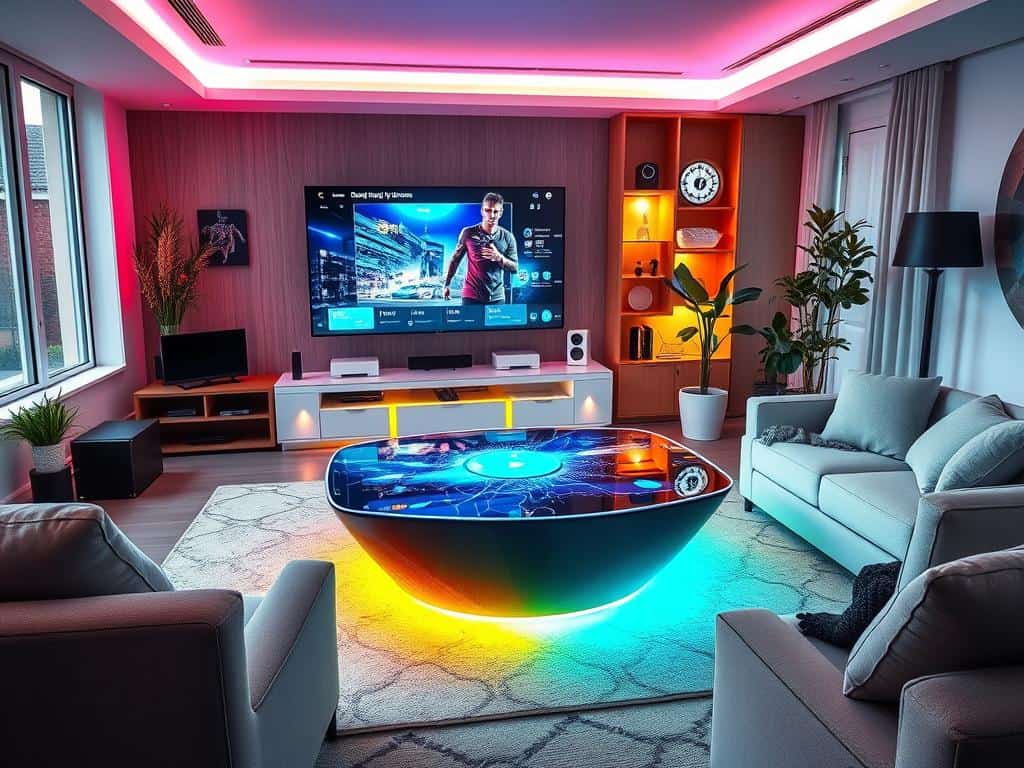There’s something almost poetic about being jolted awake by a light brighter than my future. Picture this: it’s 3 AM, and my backyard is suddenly lit up like an alien landing site thanks to my trusty motion-activated floodlight. Was it a prowler? No, just the neighborhood cat on its nightly escapade. I installed the thing to keep my home safe, only to find it mostly serves as a feline spotlight. But hey, who doesn’t enjoy a little unexpected theater in the middle of the night? It’s a love-hate relationship with this technology—a sort of nocturnal dance of paranoia and enlightenment.

So, why do we put ourselves through this? In the name of security, sure, but there’s more to it. In this article, we’ll delve into the quirks and perks of motion-activated outdoor lighting. From the eco-friendly charm of solar-powered setups to the relentless brightness of LED floodlights, and even those dusk-to-dawn wonders that promise to save us from fumbling for the light switch. Let’s dissect these luminous sentinels, one beam at a time, shining a light on what truly works—and what might just be an electrified catwalk for the local wildlife.
Table of Contents
The Night My Backyard Turned Into a Solar-Powered Disco
Imagine this: a serene evening, the city skyline just a backdrop to my little patch of green, and then—bam!—my backyard erupts into an unexpected symphony of light. It all started with a nudge from my subconscious, that persistent whisper saying, “Why not?” So I did. I installed some solar-powered, motion-activated lights, the kind advertised to make your yard safe and secure. But, oh, they became so much more than that. As dusk settled, the first brave raccoon ventured in, setting off a cascade of LED brilliance. It was like the universe had flipped a switch, and suddenly, my backyard was alive with an electric heartbeat—a disco ball over Gotham.
These aren’t your garden-variety lights. No, each one is a floodlight with a personality, programmed to burst forth with the slightest provocation. The solar panels drink up the day’s sun, storing it up for the evening’s spectacle. And it’s not just raccoons—every sway of the wind, every curious squirrel, becomes a trigger for this luminescent dance. The beauty? It’s all powered by the sun, a sustainable party that doesn’t cost the earth. As I watched, transfixed, the lights blinked and pulsed like they were in on the joke, the great cosmic prank of turning the mundane into the magnificent. It’s these moments—unexpected, unplanned—that transform a patch of earth into a stage where nature and technology waltz together under the urban stars.
When Floodlights Became the Unwanted Stars of My Garden Party
Imagine this: a serene, moonlit evening with laughter floating through the air, the clink of glasses punctuating conversation. My backyard was supposed to be a glowing haven, but instead, it was a scene from an alien abduction movie. The floodlights, those over-enthusiastic guardians of the night, decided to steal the spotlight—quite literally. There they were, the unwanted stars of the show, turning every subtle gesture into a blinding spectacle. Every time someone shifted in their seat, the sensors sprang to life, casting a blinding white light that made our garden party feel more like an interrogation room.
It’s 2 AM, and the stark reality of your motion-activated outdoor lighting is throwing a spotlight on everything in your backyard—except your path to sleep. As the nocturnal ballet of urban wildlife takes center stage, maybe it’s time to reconsider what truly deserves your attention. And perhaps that means shifting your focus from the glaring LEDs that scare off raccoons to the glowing allure of new connections. Picture this: while your yard light flickers to life with every gust of wind, you could be diving into the vibrant world of Putas maduras Barcelona. An online platform that lets you chat with captivating ladies from Barcelona, offering a much warmer glow than any floodlight ever could.
And it wasn’t just the humans who were on edge. The neighborhood raccoons, usually the stealthy infiltrators of the night, were now exposed, frozen in their tracks like deer caught in headlights. It was chaos. Guests shielded their eyes, laughter turned to squints and groans, and the romantic ambiance I had envisioned was replaced by a harsh reality show audition. I couldn’t help but laugh at the absurdity of it all, as my vision of a mellow evening morphed into a disco rave, courtesy of my overzealous solar-powered floodlights. Sometimes, the best-laid plans are just a setup for a cosmic joke.
Dusk-to-Dawn: The LED Saga That Kept Me Wide Awake
It started innocently enough—a well-intentioned solar-powered LED setup, promising eco-friendly illumination from dusk to dawn. But the reality was a relentless blaze of artificial daylight, flooding my backyard in a garish display that could rival a Broadway marquee. I’d read the packaging, believing the promise of soft, ambient light. Instead, I was gifted the visual equivalent of an all-night rave. The LEDs flickered to life every evening, synchronized perfectly with the setting sun, casting their merciless glow across my once-peaceful sanctuary.
Every rustle of the wind became a potential spotlight moment, every stray cat a trigger-happy DJ, setting off the light show. My plans for serene nights were thwarted by this relentless luminescent assault. There I was, wide-eyed at 2 AM, staring out at a scene that looked more like a UFO landing strip than a garden oasis. Sleep? A distant memory. Instead, I became the unwilling curator of this nightly spectacle, the LEDs a constant reminder of my naïve optimism in the face of modern technology’s unyielding brightness.
Illuminating the Unseen
In the city, a motion-activated floodlight isn’t just about security—it’s a fleeting beacon that turns darkness into a canvas, capturing life in its brief, blinding embrace.
Shedding Light on the Flickering Mysteries of Motion Sensors
Why does my LED floodlight turn on randomly at night?
Ah, the infamous midnight spotlight. It could be the neighborhood cat practicing its stealth maneuvers or the wind rustling just right. But often, it’s just your sensor being overly sensitive. Try adjusting the sensitivity settings, or accept that your backyard is the new stage for nocturnal critters.
How does a dusk-to-dawn sensor differ from a motion sensor?
Think of it like this: a dusk-to-dawn sensor is the reliable friend who shows up every evening and leaves at sunrise, while a motion sensor is the unpredictable party crasher. The former uses ambient light levels to decide when to turn on, and the latter is triggered by movement. Both have their charm, but know your audience—or in this case, your yard.
Are solar-powered motion lights worth the investment?
If you’re tired of tangled wires and escalating electricity bills, solar-powered options might be your best bet. They’re like the independent spirit of the lighting world, harnessing the sun’s generosity. Just ensure they get enough daylight love to keep shining bright come nighttime.
When LEDs Lead You to the Truth
It’s funny how a simple gadget meant to ward off nocturnal critters ends up shining a light on your own restless thoughts. In the silence of a city night, when the hum of human existence quiets down, that’s when the LEDs take over. They flicker to life with the slightest provocation—a cat on the prowl or the wind nudging a fallen leaf. And there you are, bathed in a harsh, revealing glow, pondering how something so mundane as a floodlight can force you to confront the secrets of your backyard—and perhaps, inadvertently, the secrets within.
As the dawn approaches, that solar-powered sentinel finally rests, its job done for another night. But the real illumination comes not from the technology, but from the stories that unfold beneath it. It’s in these quiet moments, tucked away from the chaos of daylight, that you find clarity. My journey with motion-activated lighting wasn’t just about security; it was about embracing the unexpected narratives they cast onto the walls of my life. Here’s to welcoming the chaos they bring, and letting it transform the ordinary into a canvas of unspoken tales.


